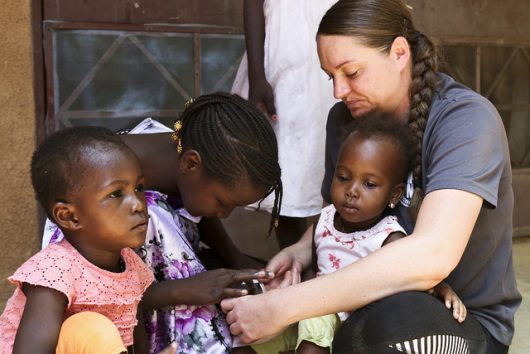Improving Girls’ Education in Senegal

Girls’ education in Senegal has greatly improved in the last 20 years, partially thanks to Senegal’s government. According to the World Bank, Senegal’s government allocates almost a quarter of its budget toward education, the highest percentage of any country in northwest Africa. The money pays for the construction of school buildings, teachers’ salaries and equal education initiatives. Despite the government’s commitment to education, cultural norms and widespread poverty still prevent many Senegalese girls from completing their education and less than 50 percent of Senegalese women are literate.
Improvements Made
Achieving gender parity in primary schools is one improvement the government has made in girls’ education in Senegal. Thanks to substantial budget allocations and initiatives for equal education, Senegal’s government has maintained gender parity in primary schools since 2010. For example, girls only made up 35 percent of Ndiarème B. Primary School’s student body when it first opened in 1996. In 2010, the percentage of girls had risen to 49 percent.
The World Bank reports that Gross Enrollment Ratios (GERs) have also risen across the small country. In 2016, 87.9 percent of girls were enrolled in primary schools according to the World Bank. However, only 63.5 percent of girls actually complete their primary education and only 57.9 percent enroll in lower secondary education (equivalent to middle school). The GER for girls enrolled in secondary education falls even lower at 48.4 percent.
The Fight Continues
First, educators fought to get girls enrolled in schools. Now, educators fight to keep them there. BuildOn is a non-governmental organization that works in the U.S. and around the world. Its global program helps build schools in poor villages. Employees and volunteers continue working with the communities to ensure each school’s success.
Aminata Ndiaye, a buildOn Education Coordinator in Senegal, has worked directly with children in Senegal’s rural communities since 2015 to bring students back to school. Ndiaye’s program has brought more than 2,000 students back to school in just a couple of years.
As a woman, Ndiaye is particularly sensitive to girls’ struggles to get an education, noting that Senegalese parents often prioritize boys’ education over girls’ education.
Poverty and Girls’ Education in Senegal
Tostan is a community-led NGO that works to educate and empower African women. Harouna Sy, a Tostan regional coordinator, says that poverty rather than culture is actually at the heart of girls’ education issues in Senegal.
Poverty is a widespread issue in Senegal and girls are often singled out to help support their families instead of attending school. Aisatou Ba’s parents took her out of school at age 11 so that she could help her mother at home and work as a maid to support her family. She watched her brothers continue going to school and eventually earn higher paying jobs. Ba’s little education disqualifies her from many higher paying opportunities. She still works as a maid and earns the equivalent of $70 per week.
Cultural Norms
Even though Sy claims poverty is at the root of girls’ unequal education, cultural norms do still affect girls’ education in Senegal. Many Senegalese parents take their girls out of school early to force them into marriages. Senegal’s government prohibits marriage for girls under 18 but it does not have the resources to enforce the policy, especially in rural villages.
Girls forced into marriage at a young age are also forced to take on new responsibilities in their new homes, such as cleaning, cooking and doing laundry. Even if the girls’ husbands allow them to stay in school, they have less time to devote to their studies. Many of these girls are also expected to get pregnant and those who do often leave school entirely.
There is still more work to do to keep Senegalese girls in school, but girls’ education in Senegal has made great strides thanks to government funding and help from NGOs.
– Kathryn Quelle
Photo: Flickr
